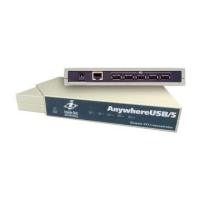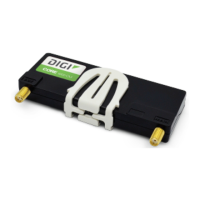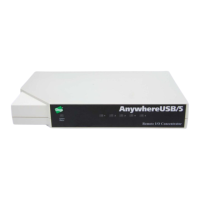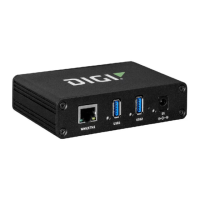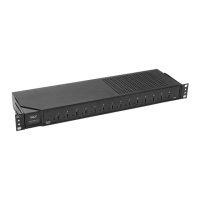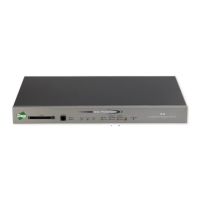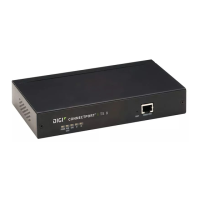Troubleshooting AnywhereUSBManager client IDis not unique
AnywhereUSB® Plus User Guide
158
AnywhereUSBManager client IDis not unique
When you install the AnywhereUSBManager, you must assign a client IDto your computer, which
must be unique.
Note See ClientID for more information about how the client ID is used by your computer and the Hub
to create a connection.
In some cases, multiple computers may inadvertently be used by the same client ID. When this occurs,
and computers with the same client ID attempt to connect with the same Hub, the first computer to
associate itself with the Hub will be able to connect to the Hub. Subsequent computers will not be
able to connect to that Hub.
You can fix this issue by changing the client ID of your computer to a unique client ID. See Change the
client ID.
No remote Hubs found
When the host computer is unable to discover any AnywhereUSB® Plus devices on the network, no
Hubs are displayed in the AnywhereUSBManager.
Firewall software blocks the port used for Hub discovery
When firewall software blocks the port used for Hub discovery, try the following:
n For firewall software, either disable it or add an exception for the port (UDP port 5353).
n Check for a link light on the Ethernet port. If the link light is not lit, connect all of the Hubs to
switches using network cables.
n Verify that the Autofind Hubs option is selected in the Preferences dialog in the
AnywhereUSB Manager. Start the Manager and choose File > Preferences to open the dialog.
n Connect the Hub directly to the host computer.
n Some anti-virus software might block the connection. You can either temporarily disable it or
add an exception for the AnywhereUSBManager executable.
n If the Hub is across a switch or router that does not forward Bonjour traffic, the
AnywhereUSBManager will not be able to discover the Hub. In this case, add the Hub to the
known Hubs list. See Manage the list of known Hubs.
n The firewall or router may block access to the AnywhereUSBport, which by default is TCPport
18574. If the Hub can be discovered but the connection fails (the state of the connection is
"Unable to connect"), you may need to reopen the AnywhereUSB port.
Hide a group in the AnywhereUSB Manager
Any group that has ports assigned to it displays in the AnywhereUSB Manager, even if no USB devices
are connected to a port. If you don't want groups with unused ports to display in the AnywhereUSB
Manager, you can reassign all of the ports in a group to a different group. Once the group does not
have any ports assigned to it, that group will not display.
